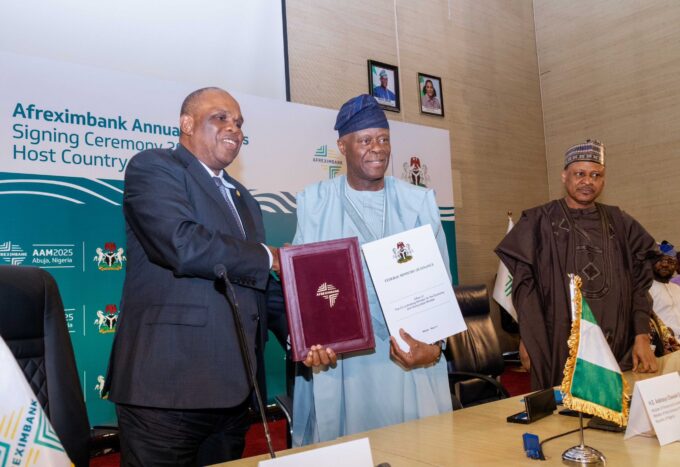Earlier the National Bureau of Statistics (NBS) published the highly anticipated Q2-2020 GDP numbers. Unsurprisingly, economic activities contracted in Q2-2020. According to the report, real GDP declined by 6.1% y/y (significantly more than our estimate), representing the steepest economic decline in Nigeria in over three decades. Clearly, this is attributed to the negative impact of the COVID-19 pandemic and the global lockdown measures on the various sectors of the economy. Notably, of the 19 sectors in the NBS’s classification, 13 recorded contraction while 6 sectors recorded expansion. The bright spots included Financial Services, Telecoms, Coal Mining, Utilities, and Agric. Specifically, the Financial Institution and Telecommunication sectors were stand-out performers with 28.4% and 18.1% expansion, respectively. Clearly, credit growth amid CBN’s LDR policy, FX revaluation gains, increased digital adoption and strategic positioning of these sectors supported their performance. On the contrary, Oil Refining, Road, Air, Rail & Pipelines Transports, Accommodation & Food Services, as well as Construction were the worst hit with over 30.0% contraction each or -52.0% on average.
Oil GDP: Hit on all side in Q2-2020
As expected, the Nigerian Oil sector steeply contracted by -6.6% y/y in real terms in Q2-2020 (vs. +7.2% and +5.1% in Q2-2019 and Q1-2020 respectively). Notably, the y/y contraction was fueled by a 12.6% y/y decline in oil production to 1.81mbpd in Q2-2020 (the lowest level since Q1-2017) amid the country’s compliance to OPEC+ output quota during the period. In terms of contribution to overall GDP, the oil sector contribution slid to 8.9%, (vs 9.0% and 9,5% in Q2-2019and Q1-2020 respectively).
Non-Oil GDP: A broad-based contraction
The non-oil real GDP contracted for the first time since Q3-2017 by -6.1% in Q2-2020 (vs. +1.6% in Q2-2019 and Q1-2020, respectively. This was on the back of slow growth in the Agriculture sector which grew 1.58% (vs 1.79% in Q2-2019 and 2.20% in Q1-2020), coupled with contraction in Services sector, -6.78% in Q2-2020 (vs 1.94% in Q2-2019 and 1.57% in Q1- 2020) and the Industrial sector, down 12.05% (vs 2.84% in Q2-2019 and 2.26% in Q1-2020). However, there were a few bright spots within the non-oil sector. Notably, the Financial Services and the ICT sector which contributed a total of 22.0% to real GDP jumped by 28.4% and 18.1% respectively in Q2-2020. Overall, 13 sub-sectors within the non-oil GDP classification grew while 32 contracted.
Agric GDP: Inter-state restrictions and planting season left an underwhelming imprint
Agriculture sector GDP slowed to 1.58% in Q2-2020 y/y as restriction in movements coupled with extension of planting season into Q2-2020 left an underwhelming imprint on the sector. This is a slowdown relative to the 1.8% and 2.2% recorded in Q2-2019 and Q1-2020, respectively. Specifically, Crop Production which accounts for above 85.0% of the sector’s GDP was marginally up by 1.4% (vs. 1.9% and 2.4% in Q2-2019 and Q1-2020, respectively). Similarly, growth in the Forestry sub-sector slowed to 1.1% y/y in Q2-2020 (vs 3.2% and 1.7% y/y in Q2-2019 and Q1-2020, respectively). Meanwhile, the Livestock sub-sector – the second largest contributor to Agric. GDP (at c. 7-8%) saw a faster growth of +2.26% (vs -0.1% and +0.6% in Q2-2019 and Q1-2020, respectively). Also, Fishery sub-sector recorded a faster growth of 5.68% (vs 1.1% and 1.5% in Q2-2019 and Q1-2020, respectively).
Manufacturing Sector: 11 of 13 sub-sectors contracts in Q2-2020
The manufacturing sector was one of the worst hit sectors in Q2-2020, declining 8.78%y/y. Analysing the component of the subsector showed that only 2 out of the 13 sub sectors recorded growth. Specifically, the Chemical and Pharmaceutical sub-sector (+3.8% y/y) posted its fastest growth in more than three years in Q2-2020. This is unsurprising considering the intervention fund channelled towards the pharmaceutical companies as well as the increased demand for pharmaceutical products in the wake of COVID-19 pandemic. Similarly, the Motor Vehicles and Assembly sub-sector was up 6.95% y/y (vs 1.04% y/y in Q1-2020). Meanwhile, the Oil Refining (-67.66% y/y), Electrical and Electronics (-28.41% y/y), Pulp Paper and Paper Products (-28.16%) as well as Non-metallic Products ( -22.78% y/y) recorded the sharpest decline within the sector. Overall, the manufacturing sector contributed 8.82% to aggregate GDP in Q2-2020, down 83bps compared to Q1-2020.
Outlook: Q2-2020 is as worst as it gets for 2020
For the rest of the year, we believe the sharp contraction recorded in Q2-2020 is as worst as it can get for the year as the government continues to phase-out lockdown measures implemented to curb the spread of COVID-19 within the country. However, we expect economic performance to remain contractionary through H2-2020 as business activities continue to struggle to return to their pre-COVID-19 levels. This signals that recession will kick in fully by Q3-2020E, as key sectors such as Oil & Gas, Trade, Agric, Aviation, other Manufacturing & Services, accounting for over 50% of real GDP, may not rebound fully by end of September 2020.
Specifically, we expect Nigeria’s compliance to OPEC+ production cut agreement (capped at 1.50mbpd from August-2020 to Dec-2020) and compensation for prior months overproduction with deeper cut to limit production to below pre-COVID-19 levels of above 2.0mbpd. Hence, oil sector GDP is expected to remain pressured. Also, contrary to our initial optimistic position for the non-oil sector to recover by Q4-2020, we now assume the sector will remain contractionary through Q3 and Q4-2020E. This assumption is predicated on the negative impact of the current FX scarcity, pressure on consumer spending amid rising inflation and unemployment rates, would continue to have on volumes growth. Thus, offsetting the anticipated gains from easing economic restrictions and liquidity injections from both the monetary and fiscal sides. However, we believe sectors such as the ICT, Agriculture, and Financial Services, which contribute c. 45.0% to real GDP, will continue to stay resilient during the dark times in Q3 and Q4-2020.
Adjusting our model estimates for all the above, we have further lowered our real GDP growth forecast for FY-2020E from -2.69% to between -2.95% and -3.14%. The biggest downside risk to this projection remains the coronavirus related worries, especially if the virus continues to spread rapidly in the rest of the world as this may continue to hurt oil prices. Thus, this might delay the possibility of an early recovery or a V-shape recovery to a more strenuous U-shape or W-shape recovery.














